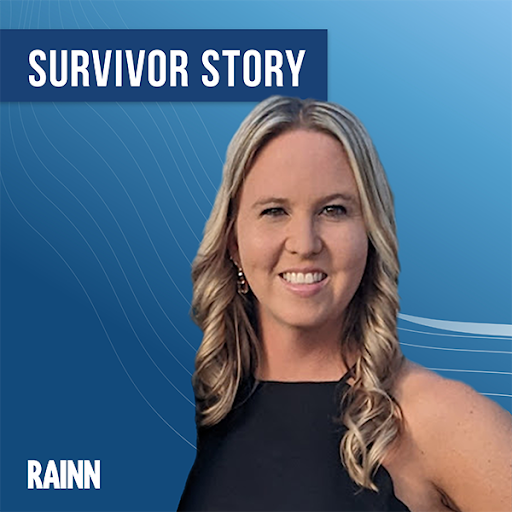Para leer en español, haga click aquí
Kim Bergman is an activist, mother, gymnast, Native American, and survivor of child sexual abuse (CSA). Her story is one of perseverance and victory in the face of systems that failed her and countless other children.
In 1998, at 12 years old, Kim Bergman was groomed by a gymnastics coach with a highly respected reputation. It occurred during a time when her family was dealing with her father's diagnosis of bipolar disorder, and Kim said that the perpetrator used this time of conflict and stress to his advantage and began the grooming process.
"It all started pretty subtle," Kim recalled but noted that the abuse quickly escalated during a summer gymnastics camp and specifically in a team hotel room. In the fall of that year, the coach was fired for sexually assaulting three female coaching staff members at the gym, all of whom had been gymnastic students coached by the perpetrator when they were younger.
 Even with this revelation, it wasn't until the following summer that Kim started to write letters to one of these staff members who had just left the gym. In the letters, she began to disclose the abuse for the first time. "My mom happened to find the letters in my room before I sent them," she said. "Instead of calling the police, they got me into therapy through Haskell Indian Health Center, a Native American health organization, to speak with someone about the abuse and issues going on within my family."
Even with this revelation, it wasn't until the following summer that Kim started to write letters to one of these staff members who had just left the gym. In the letters, she began to disclose the abuse for the first time. "My mom happened to find the letters in my room before I sent them," she said. "Instead of calling the police, they got me into therapy through Haskell Indian Health Center, a Native American health organization, to speak with someone about the abuse and issues going on within my family."
The therapist did not report the abuse to the police for almost a year, and though an investigation was opened, Kim said law enforcement didn't have enough evidence to arrest the perpetrator.
"At the time, I assumed that no one believed me, or I didn't matter, or it wasn't bad enough," she said. Her pursuit of justice could have ended there, but 10 years later, she learned that not only had the perpetrator continued to coach, he had opened his own gym. Crucially, Kim learned he also had been arrested for sexually assaulting another child. With this new information, Kim contacted the police, wanting to help in the case. Instead, they told her that the statute of limitations had run out for her. The coach was eventually convicted but was only sentenced to two years in prison. He was given a plea deal and sentenced as a first-time offender because none of the evidence from his previous victims could be used due to the statute of limitations.
"To find out there were others [assaulted by the same man] before me kind of makes me feel at peace that I wasn't the only one that couldn't do anything," Kim said after learning that she is one of at least 11 known victims. However, that didn't mean she couldn't do anything in the future.
"I became a social worker in Child Protective Services in the same town that I lived in where the abuse took place," she said, and in the course of her work, Kim stumbled upon her files and found that her claim had, in fact, been substantiated by Child Protective Services (CPS).
She had already reported the abuse to USA Gymnastics, the national governing body for the sport, in 2008 after the coach was arrested for child sexual abuse, but said they failed to add the coach to their internal registry of banned members. After finding that CPS substantiated her abuse, Kim reached out again in 2011 to USA Gymnastics. USA Gymnastics did not add the coach to the registry until Kim contacted them a third time in 2018 after she joined the national lawsuit against USA Gymnastics and the United States Olympic Committee. (While not a victim of Larry Nassar, Kim told KMBC 9 News: "At first, I felt really conflicted about trying to join that lawsuit because I wasn't a Larry Nassar victim. I wasn't an Olympian, and the thing that finally got me on board was that things don't change unless it affects them financially.”)
During the lawsuit process, Kim met up with a group of survivors and legislators working on the statute of limitations for child sexual abuse in Kansas and became a co-creator of the Protecting KS Children From Sexual Predators bill. The bill initially focused on removing the civil statute of limitations for child sexual abuse. This meant removing the time limit for survivors to file a lawsuit for civil damages.